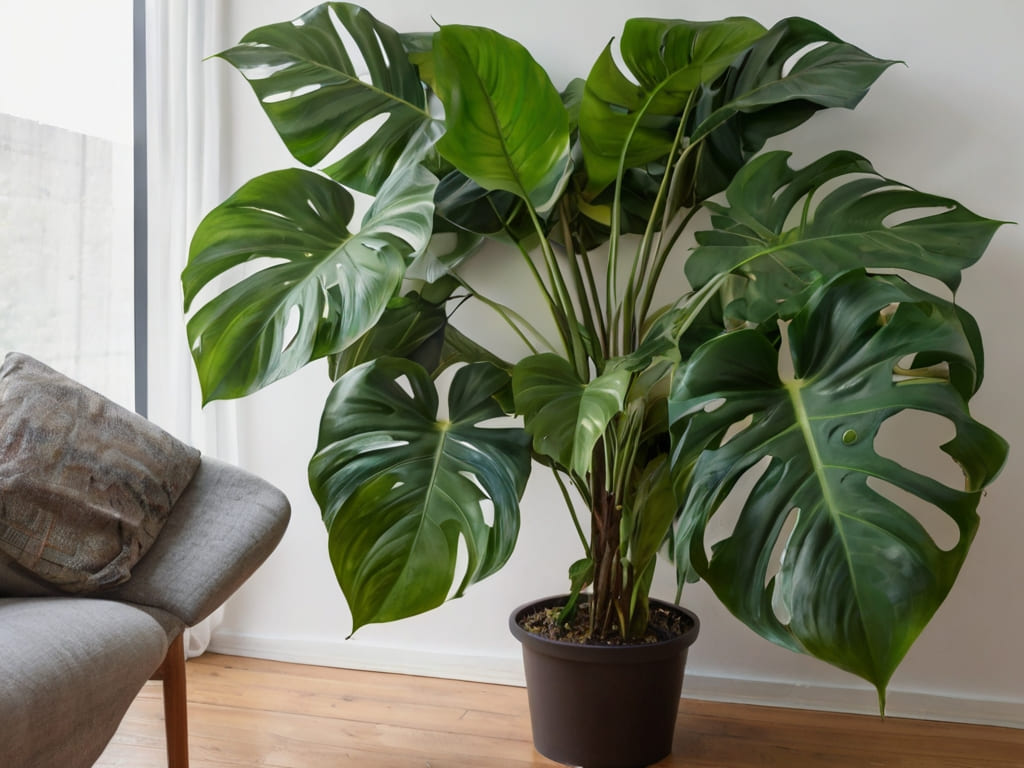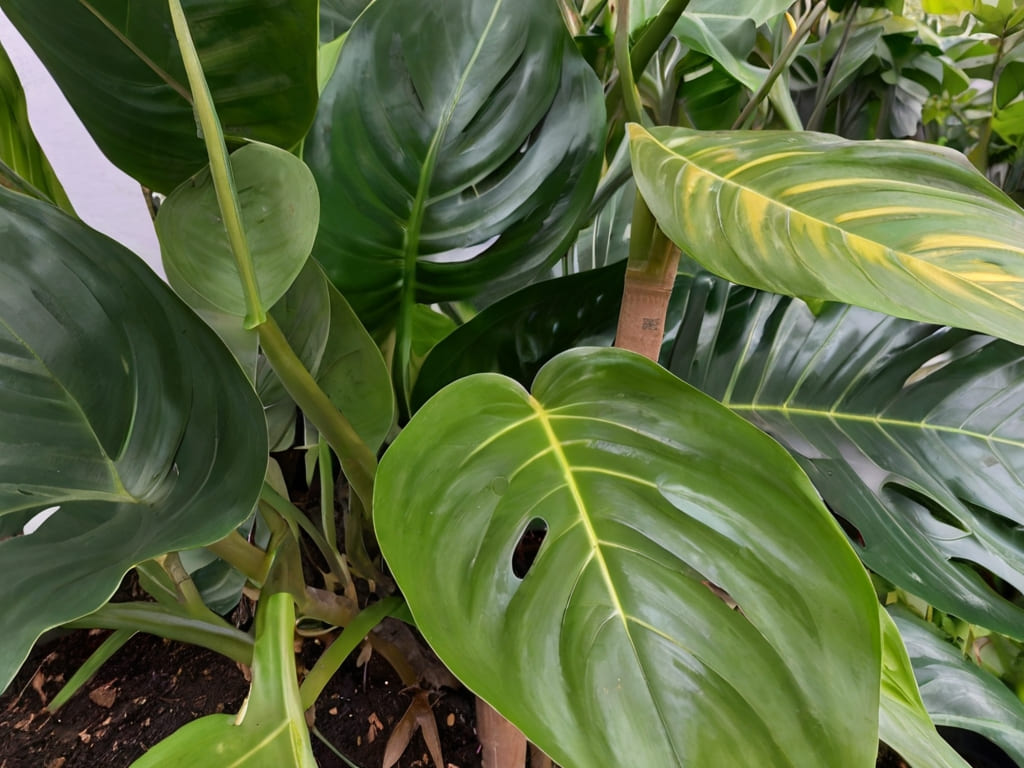Introduction
Once upon a time, nestled in the deep, verdant corners of Brazil, thrived a plant so striking, it caught the eye of the renowned landscape architect Roberto Burle Marx. This was no ordinary plant; it was the Philodendron Burle Marx, named in his honor. Known for its enchanting, heart-shaped, glossy leaves that cascade gracefully, it embodies a piece of the wild Brazilian tropics, right in your living room. Not only does it purify the air, but its undemanding nature makes it a favorite among plant enthusiasts.
I am a dedicated plant enthusiast with a deep-rooted passion for Philodendrons, owing to their captivating beauty and resilience. My years of nurturing a diverse array of houseplants have endowed me with insights and techniques essential for their thriving.
The quest for successful Burle Marx Philodendron care can often seem like a daunting expedition, fraught with misconceived notions of complexity. However, this blog post lights the path to mastery over its care, ensuring your Philodendron not only survives but flourishes, bringing a touch of the wild, untamed Brazilian jungles into your urban dwellings.
Unveiling the Burle Marx Philodendron
Botanical Background
The Philodendron genus, a jewel of the Araceae family, stands as a testament to nature’s inventiveness. Originating from the lush landscapes of South America, this genus comprises a diverse palette of species, each unique in its beauty. Among them, the Philodendron Burle Marx honors the legendary Brazilian artist and landscape architect, Roberto Burle Marx, with its distinctive appearance. Characterized by its glossy, heart-shaped leaves that unfurl to reveal a green so deep it seems to hold the essence of the rainforest itself, the Burle Marx distinguishes itself with a modest yet robust growth habit, thriving both as a terrestrial or epiphytic plant.
Distinguishing Features
In a garden of verdant diversity, the Burle Marx Philodendron declares its distinction. Unlike its cousin, the Philodendron Birkin, known for its striking white or yellow pinstripe variegation on dark green leaves, the Burle Marx adopts a more subtle elegance with uniformly green, velvety leaves. Its growth habit too sets it apart; where varieties like the Red Congo boast broad, thick, and reddish leaves, the Burle Marx cultivates a more understated charm, preferring the elegance of simplicity over the flamboyance of its relatives.
This humility in growth and care requirements positions the Burle Marx as an exquisite yet accessible gem among plant enthusiasts, bringing the allure of the Amazonian wilderness into homes with effortless grace.

Essential Care Requirements for a philodendron Burle Marx
Lighting Needs
For the Philodendron Burle Marx, the idyllic lighting situation is bright, indirect light. This plant thrives under the sort of illumination that mimics the dappled sunlight of its native rainforest habitat. Direct sunlight, however, can be detrimental, leading to scorched leaves, while too low light can result in leggy stems and sparse foliage. To find the perfect spot, consider placing your Burle Marx near an east-facing window or behind a sheer curtain in a south or west-facing room. This setup provides ample light without the harsh effects of direct exposure to the sun.
Watering Wisdom
Avoiding overwatering is crucial for the Burle Marx, as excessive moisture can lead to root rot. The “check-before-you-soak” method involves testing the soil’s moisture level by inserting a finger about an inch deep. If the soil feels dry, it’s time to water; if it still feels moist, wait a few days before checking again. This method ensures your Burle Marx receives water only when necessary, keeping it healthy and hydrated without oversaturating its roots.
Soil Secrets
Philodendrons, including the Burle Marx, demand well-draining soil to thrive. A simple DIY potting mix that supports its growth includes one part perlite, one part orchid bark, and two parts coco coir. This blend ensures excellent drainage and air circulation around the roots, preventing waterlogging while retaining just enough moisture to keep the plant happy.
Fertilizing for Flourishing Growth
During the growing season (spring through summer), fertilizing your Burle Marx can significantly enhance its vitality. Use a balanced, water-soluble fertilizer at half the strength recommended on the package, once a month. This approach will support robust growth and vibrant foliage without risking nutrient burn, which can occur with over-fertilization.
Temperature & Humidity
The Philodendron Burle Marx prefers a warm environment, with temperatures ranging between 65 to 80°F (18 to 27°C). Avoid placing your plant in areas prone to sudden temperature drops or cold drafts. Humidity is also a key factor in mimicking its native tropical conditions. Strategies for maintaining adequate humidity include placing a humidifier nearby or setting the plant on a pebble tray filled with water. The evaporation will increase the moisture in the air, creating an ideal microclimate for your Burle Marx to flourish.

Tips for philodendron Burle Marx Success
Training & Pruning
Philodendron Burle Marx, with its naturally vining habit, can be encouraged to climb for a more vertical presentation in your space. Using moss poles or stakes not only supports this growth but also mimics the plant’s natural environment, encouraging larger leaf development. Secure the plant gently to the support structure using soft ties, allowing room for growth and adjustment. Pruning plays a critical role in maintaining a visually appealing shape and promoting fuller growth. To encourage a bushier appearance, trim leggy stems just above a leaf node during the growing season. This action stimulates new growth from the pruning point, resulting in a more compact, lush plant.
Propagation Techniques
Propagating the Burle Marx offers an exciting opportunity to expand your collection or share it with fellow enthusiasts. Stem cuttings and division are the most effective methods. For stem cuttings, select a healthy section with at least two nodes. Cut just below a node, and place the cutting in water or directly into a moist potting mix. In a few weeks, roots will develop. When they’re an inch long, transplant the cutting into soil. Dividing the plant during repotting is another method. Gently separate a segment of the plant, ensuring it has roots attached, and pot it separately. Both methods promise new growth within weeks, granting you a new plant to nurture or share.
Common Problems & Solutions
Leaf Discoloration: Yellowing leaves can result from overwatering or poor drainage. Ensure the potting mix is well-draining and allow the top inch of soil to dry out before watering again. Brown leaf tips may indicate low humidity; consider using a humidifier or a pebble tray to raise the humidity around your plant.
Pests: Common pests like spider mites, mealybugs, and aphids can be deterred by regular cleaning of leaves and the application of neem oil, an organic pest control solution. Inspect your plant regularly and treat pests promptly to prevent them from spreading.
Diseases: Root rot due to overwatering is a prevalent issue. Prevent this by ensuring your pot has good drainage and by letting the soil slightly dry between waterings. If root rot occurs, remove the affected roots, repot the plant in fresh potting mix, and adjust your watering regimen.
By following these guidelines, you ensure your Philodendron Burle Marx not only survives but thrives, mirroring the lush, vibrant life of the tropical jungles it hails from.
Conclusion
In sum, thriving Philodendron Burle Marx care hinges on bright, indirect light, cautious watering, well-draining soil, periodic fertilization, and maintaining a warm, humid environment. Remember to support its climbing nature, prune for fuller growth, and don’t hesitate to propagate or address common problems promptly. These steps are your pathway to cultivating a healthy, vibrant Philodendron Burle Marx that brings a touch of the tropics to your space. We’d love to hear about your experiences with Burle Marx or if you have any questions. Share your stories or inquiries in the comments below, and let’s foster a thriving plant care community together!
